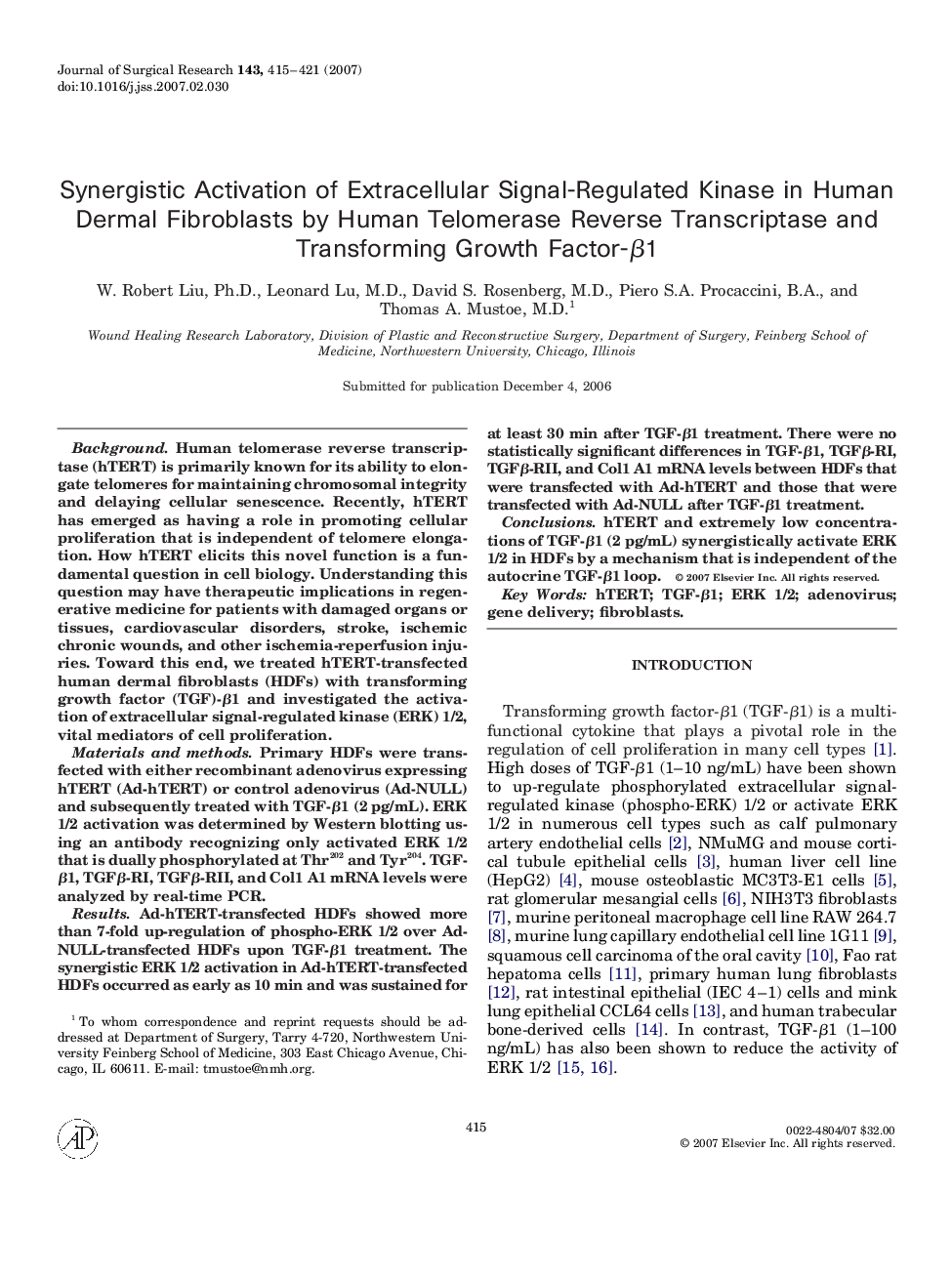| Article ID | Journal | Published Year | Pages | File Type |
|---|---|---|---|---|
| 4304530 | Journal of Surgical Research | 2007 | 7 Pages |
BackgroundHuman telomerase reverse transcriptase (hTERT) is primarily known for its ability to elongate telomeres for maintaining chromosomal integrity and delaying cellular senescence. Recently, hTERT has emerged as having a role in promoting cellular proliferation that is independent of telomere elongation. How hTERT elicits this novel function is a fundamental question in cell biology. Understanding this question may have therapeutic implications in regenerative medicine for patients with damaged organs or tissues, cardiovascular disorders, stroke, ischemic chronic wounds, and other ischemia-reperfusion injuries. Toward this end, we treated hTERT-transfected human dermal fibroblasts (HDFs) with transforming growth factor (TGF)-β1 and investigated the activation of extracellular signal-regulated kinase (ERK) 1/2, vital mediators of cell proliferation.Materials and methodsPrimary HDFs were transfected with either recombinant adenovirus expressing hTERT (Ad-hTERT) or control adenovirus (Ad-NULL) and subsequently treated with TGF-β1 (2 pg/mL). ERK 1/2 activation was determined by Western blotting using an antibody recognizing only activated ERK 1/2 that is dually phosphorylated at Thr202 and Tyr204. TGF-β1, TGFβ-RI, TGFβ-RII, and Col1 A1 mRNA levels were analyzed by real-time PCR.ResultsAd-hTERT-transfected HDFs showed more than 7-fold up-regulation of phospho-ERK 1/2 over Ad-NULL-transfected HDFs upon TGF-β1 treatment. The synergistic ERK 1/2 activation in Ad-hTERT-transfected HDFs occurred as early as 10 min and was sustained for at least 30 min after TGF-β1 treatment. There were no statistically significant differences in TGF-β1, TGFβ-RI, TGFβ-RII, and Col1 A1 mRNA levels between HDFs that were transfected with Ad-hTERT and those that were transfected with Ad-NULL after TGF-β1 treatment.ConclusionshTERT and extremely low concentrations of TGF-β1 (2 pg/mL) synergistically activate ERK 1/2 in HDFs by a mechanism that is independent of the autocrine TGF-β1 loop.
